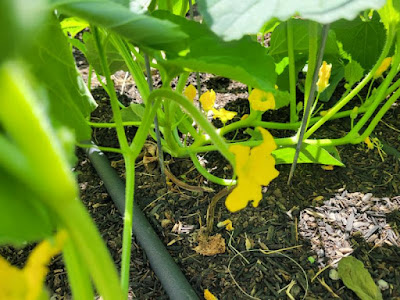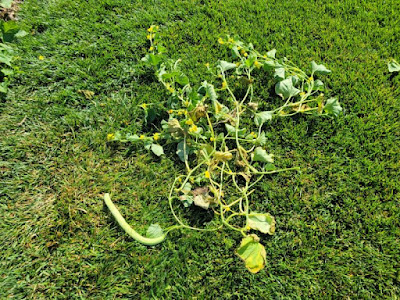The plants started off very well and the fruits grew at a
good pace. The length of the fruit was amazing and the "cool" factor was very high. Why not make things better? To ensure that my plants did
well I added compost. That is where my primary mistake took place. The
compost was not the expensive compost that one would pay a premium for,
but city compost – with plenty of bad bacteria and disease.

It was not long after putting a layer of compost on the plants that the disease began. It started with just a little bit of wilt, but quickly made its way around the garden until all of the plants were hit by it. Sometimes we have good ideas and sometimes we don’t. Sometimes you get what you pay for. And sometimes you get less than you pay for – even if it is free.




























































































